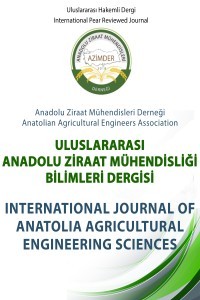
Uluslararası Anadolu Ziraat Mühendisliği Bilimleri Dergisi
Yazarlar: Turan KARADENİZ, Gülşah ÇATMADIM, Hatice ŞAHİN ÖYLEK
Konular:Bahçe Bitkileri
Anahtar Kelimeler:Almond,Adaptation,Amygdalus communis L
Özet: Almond belongs to the genus Prunus of the Rosaceae family. Botany is in the class of stone fruits. Its native Central and West Asia, China, India, Iran, Syria, Turkey, Greece and spread to Italy. The low mountain slopes and barren areas of Central and Southwest Asia are covered with wild almond trees grown from seed. Almond has spread its ecological conditions to different regions in the world and has created new varieties or genotypes depending on the agricultural activities applied there. Our country is a natural spreading area in the homeland and almonds of many fruits due to its location. Almond cultivated on an area of 34050 ha in our country, ranked 4th in the world with 90.000 thousand tons in almond production in 2017. Almonds are the earliest waking trees in spring. Damages to almond flowers that awaken early in late spring frosts also limit commercial production) Our country has very different ecological areas in terms of latitude and longitude. Because of this ecological difference, the same kind of almond cannot be expected to show the same yield and quality standards for different regions. When the adaptation studies conducted to date are examined, it is seen that 9 of them are made in South East Anatolia, 8 of them are in Mediterranean, 2 of them are in Aegean, 1 of them are in Marmara and 1 of them are in Black Sea region. When the provinces in which the studies were conducted are examined, it is seen that 8 of them are in Şanlıurfa, 5 of them are in Kahramanmaraş, 2 of them are in Hatay, 1 of them are in Adana, Aydın, Gaziantep Uşak, Tokat and Yalova. As a result of these studies, different quality and yields were observed in all kinds.